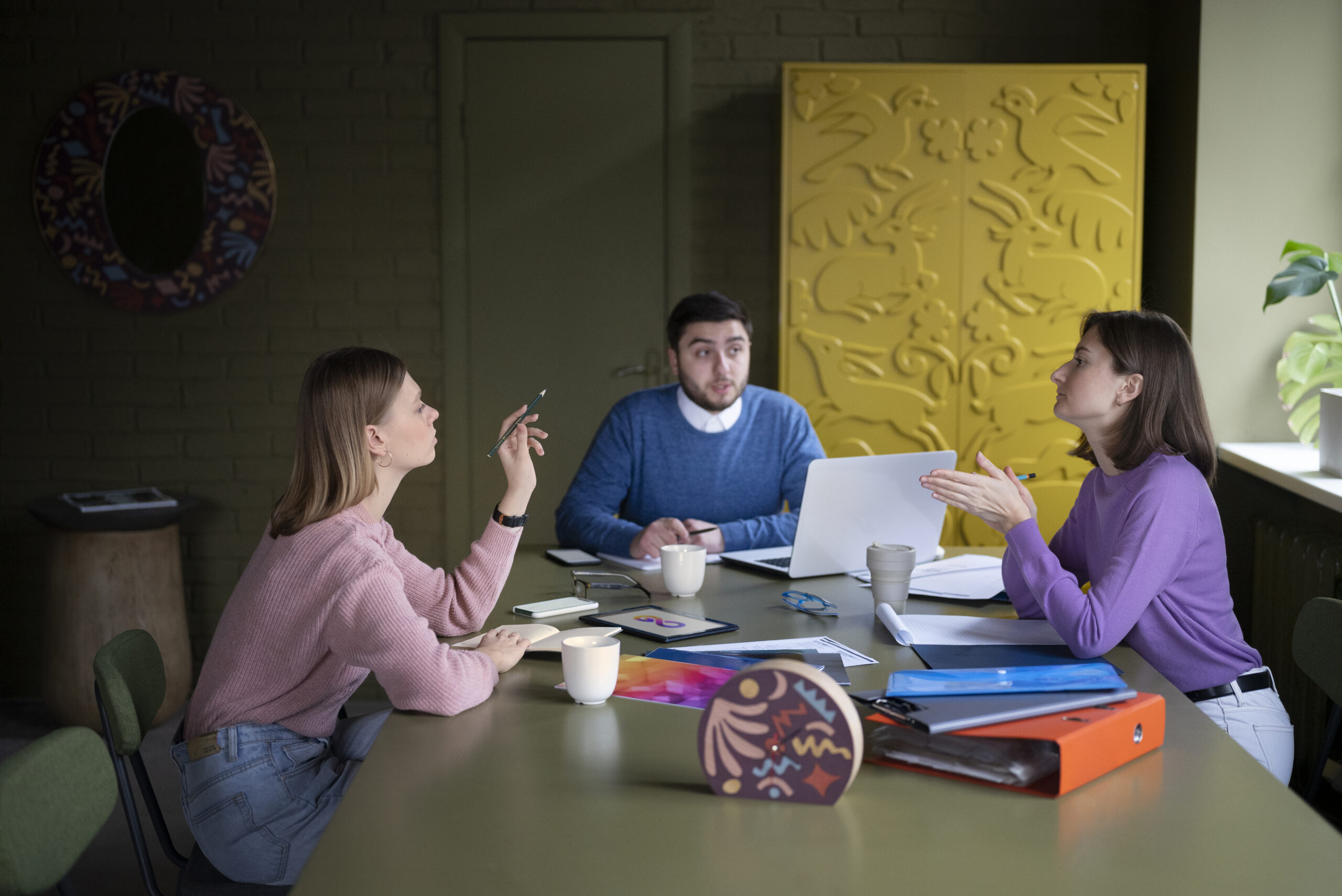In today’s rapidly evolving business landscape, creativity is increasingly recognized as a vital asset for organizations striving to remain competitive and innovative. Companies are constantly seeking ways to foster an environment where creative ideas can flourish, knowing that innovation drives growth and success. A space dedicated to fostering creativity plays a critical role in this process, and conversations, particularly with thought leaders like Jessica, can further amplify this effect. This article explores the significance of creating such spaces within a business context and how meaningful discussions can inspire breakthrough ideas and solutions. It also acknowledges the crucial role that HR professionals and organizational development specialists play in this process, as they are instrumental in shaping the culture and environment of the organization.
The Growing Importance of Creativity in Business
Creativity in business is no longer seen as a luxury but as an essential component for success. Organizations that embrace creativity are more likely to drive innovation, solve complex problems, and adapt to changing market conditions. Creativity fuels the development of new products, processes, and strategies, all of which contribute to a company’s bottom line.
However, creativity is not limited to the artistic world. It encompasses the ability to think outside the box, approach challenges with a fresh perspective, and find unique solutions that set businesses apart. This is especially true in industries like technology, marketing, and product development, where innovation is the key to staying ahead of competitors.
Creating a Space for Fostering Creativity
For creativity to thrive, it must be nurtured in an environment that encourages openness and free thinking. A space dedicated to fostering creativity is crucial in this regard. Such a space is more than just a physical location; it’s an environment where ideas are welcomed, explored, and allowed to evolve without fear of judgment.
From a physical standpoint, creative spaces within businesses can be designed to encourage collaboration and brainstorming. Open-plan offices, flexible workstations, and areas that promote informal interactions can help break down barriers and inspire spontaneous creativity. Additionally, businesses can leverage digital tools and platforms that support real-time idea sharing and collaboration, enabling teams to innovate without limitations.
However, a physical environment alone is not enough. Creativity also requires a mental space, a culture within the organization that values experimentation and learning. This is where conversations play an integral role. By engaging in open, meaningful dialogues, employees can share insights, challenge each other’s thinking, and build upon ideas in a way that fosters innovation. These conversations are not just a part of the process, but they are the process, engaging everyone in the journey of creativity.
Conversations as Catalysts for Creativity
In a business context, conversations serve as a powerful catalyst for creativity. Whether through formal brainstorming sessions or informal discussions among colleagues, talking through ideas often sparks new solutions and leads to fresh approaches. These conversations can occur at all levels of an organization, from executives to entry-level employees, as every individual’s perspective can add value to the creative process.
One example of how conversations drive creativity is seen in Conversations with Jessica. Jessica, a recognized thought leader in the creative industry, frequently engages in discussions that provide new insights into the creative process. Her conversations often touch on important aspects such as overcoming failure, embracing diverse perspectives, and finding inspiration in unexpected places. These conversations provide the foundation for innovative thinking, encouraging participants to break free from conventional approaches and explore new possibilities.
In a business setting, fostering a culture of open conversation can lead to the generation of ideas that would not have been possible in isolation. However, it’s important to note that this process is not without its challenges. Some employees may be hesitant to share their thoughts, fearing criticism or rejection. By creating a space where employees feel comfortable sharing their thoughts without the fear of being criticized, organizations can unlock new levels of creativity and innovation.
Building a Creative Community
A creative community within an organization is a vital component of fostering ongoing innovation. By connecting individuals who share a common goal of creative problem-solving, businesses can create an ecosystem where ideas are continuously exchanged, refined, and expanded upon. Whether through formal collaboration or informal networking, a strong creative community ensures that creative energy is constantly flowing.
Building such a community requires intentional effort. Businesses can organize workshops, creative sessions, and team-building activities that encourage collaboration and the exchange of ideas. Additionally, promoting cross-departmental communication allows employees from different areas of expertise to bring fresh perspectives to the table, further enhancing the organization’s creative output.
Ethics and Integrity in Creative Spaces
While fostering creativity is essential, it is equally important to maintain ethical standards in the creative process. Business leaders must ensure that creative spaces remain inclusive and respectful of all ideas. This includes creating an environment where diverse perspectives are valued, intellectual property is respected, and ideas are not exploited without credit. Remember, in the world of creativity, ethics is not just a guideline, but a commitment to respect and value everyone’s contribution.
Additionally, businesses must emphasize the importance of transparency and honesty in the creative process. Plagiarism, the misuse of others’ ideas, and unethical practices can undermine the trust within a team and stifle innovation. By promoting ethical behavior and integrity, companies can create a creative space that encourages genuine contributions and fosters long-term innovation.
Practical Steps for Fostering Creativity in Your Organization
For businesses looking to foster creativity, here are several actionable steps to consider:
- Design a Creative Workspace: Ensure your office or work environment is conducive to creative thinking. This includes providing comfortable, flexible spaces that encourage collaboration and informal conversations.
- Encourage Open Conversations: Create opportunities for employees to engage in discussions that challenge assumptions and encourage new ideas. This can be achieved through regular brainstorming sessions or informal meetings where ideas are freely exchanged.
- Promote Cross-Department Collaboration: Bring together employees from different departments to collaborate on creative projects. This can lead to the generation of ideas that are more diverse and innovative.
- Embrace Failure as Part of the Process: Encourage employees to take risks and learn from their mistakes. Failure is often an essential part of the creative process, and fostering an environment where employees can experiment without fear of failure can lead to greater innovation.
- Invest in Employee Development: Provide training and resources that help employees develop their creative skills. This can include workshops, seminars, and mentorship programs that focus on creative thinking and problem-solving.
Conclusion
In conclusion, a space dedicated to fostering creativity is essential for any business that aims to stay competitive in today’s innovation-driven economy. By designing environments that encourage open conversations and creative thinking, businesses can inspire employees to explore new ideas and solutions. Conversations with Jessica and other thought leaders highlight the power of dialogue in unlocking creativity and fostering a culture of innovation. For further insights into creativity and how it impacts various industries, you can explore Wikipedia’s page on Creativity, where you can learn about the diverse theories and approaches that shape creative thinking in the business world.






